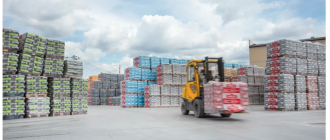SQLITE NOT INSTALLED
Canada has long been a magnet for entrepreneurs, investors, and business owners who want to build companies in a stable economy with good quality of life, access to global markets, and family-friendly immigration policies. If you are reading this, you probably have questions: Which program fits me? How much money do I need? Can I bring my family? How long will it take? In this article I’ll walk you through the major pathways, the practical steps, the paperwork you’ll need, and the strategic choices that help businesspeople succeed in Canada business visa. I’ll write like I’m speaking to a friend — straightforward, practical, and honest — because immigration is part paperwork, part business strategy, and part life decision.
Why business immigration to Canada appeals to entrepreneurs and investors
Canada blends economic opportunity with stability. Cities like Toronto, Vancouver, Montreal, Calgary, and Halifax each have distinct business ecosystems: tech clusters, natural resources, advanced manufacturing, and strong service sectors. Canada’s trade agreements, including the Comprehensive Economic and Trade Agreement (CETA) with the EU and the USMCA for North American trade, make it easier to reach international customers from Canadian bases. Beyond market access, many people choose business immigration for lifestyle reasons. Universal public health coverage at the provincial level, strong public education, relatively low crime rates, and clear pathways to permanent residency and citizenship make Canada attractive for entrepreneurs who want to raise families here. Add to that a supportive startup scene, incubators, venture capital availability, and government programs aimed at commercialization — and you get a compelling package. But, it’s not just the good headlines. Canadian business immigration blends legal requirements with real-world business realities, which means successful applicants understand both the immigration rules and the market fundamentals. That combination is the focus of this guide.
Major business immigration pathways — an overview
There isn’t one single “business immigration” route in Canada. Instead, you choose from a menu of federal and provincial options, and from temporary and permanent pathways. Some of the main approaches include the Start-up Visa (federal), Provincial Nominee Program (PNP) entrepreneur streams, the Self-Employed Persons Program, Quebec’s business streams, and temporary options like intra-company transfers or employer-specific work permits that can lead to permanent residency. Below is a compact comparison to help you see the landscape at a glance. Remember: program details change, so always confirm current requirements with Immigration, Refugees and Citizenship Canada (IRCC) or the relevant provincial immigration office.
| Program | Typical focus | Common eligibility features | Investment or net worth | Leads to PR? |
|---|---|---|---|---|
| Start-up Visa (Federal) | Innovative companies with support from a designated organization | Letter of support, committed business, language ability, settlement funds | No fixed government investment, but must secure investor support (VC, angel, or incubator) | Yes |
| Provincial Nominee (Entrepreneur streams) | Starting or buying a business in a specific province | Business plan, management experience, minimum investment, job creation | Varies widely by province (often CAD 100k–800k+) | Usually (through provincial nomination) |
| Self-Employed Persons | Cultural or athletic entrepreneurs who will be self-employed in Canada | Relevant experience, intention to be self-employed, ability to contribute | No fixed investment but must be viable | Yes |
| Quebec business streams | Entrepreneur and investor programs under Quebec’s jurisdiction | Different requirements; Quebec has its own selection rules | Historically higher for investor streams; varies for entrepreneur streams | Yes (Quebec selection followed by federal PR application) |
| Intra-company transfer | Transferring established managers/execs to a Canadian branch | Existing corporate relationship, managerial role, or specialized knowledge | None mandated by immigration; corporate investment needed to operate | No directly, but can be a stepping stone to PR |
Choosing between federal and provincial routes
There’s no single “best” route — the best fit depends on your business model, investment capacity, timeline, and where you want to live. If you have a high-growth tech startup with a strong pitch and investor interest, the Start-up Visa might be ideal because it connects you to Canadian investors and leads directly to permanent residency. If you want to buy or run a local business and invest in a provincial economy, a PNP entrepreneur stream could be better because provinces nominate people who will contribute directly to their regional economies. If you’re transferring within a multinational company, an intra-company transfer can be fast and predictable, and can later support PR applications.
The Start-up Visa: for innovative founders and global startups
The Start-up Visa (SUV) is a federal program aimed at helping innovative entrepreneurs scale in Canada with the backing of designated organizations (venture capital funds, angel investor groups, or business incubators). This program is attractive because it’s not tied to a particular province and leads directly to permanent residency. To qualify you generally need:
- A qualifying business that is incorporated in Canada and has a solid plan for growth;
- A letter of support from a designated organization (this usually means convincing a VC, angel group, or incubator to back your idea);
- Ownership and active management by the applicants — the founders must hold significant ownership and be actively involved;
- Minimum language ability in English or French (usually CLB 5);
- Proof of settlement funds to support yourself and family on arrival.
Getting a letter of support is the biggest hurdle. Designated organizations evaluate startups the way investors do: market size, founder team, traction, business model, and scalability. If you secure that support, your work is half done — the rest is an application to IRCC with the supporting documents. Pros: direct PR, access to Canadian investor networks, good fit for tech/scalable models. Cons: highly competitive; relies on investor support; no set “investment” guarantee — success depends on convincing an organization of your potential.
Provincial Nominee Programs (PNP) — entrepreneur and business streams
Provincial Nominee Programs allow provinces to nominate business immigrants who will invest in and operate businesses within their jurisdiction. Each province and territory sets its own rules for entrepreneur streams. That means there is a lot of variety: investment thresholds, minimum equity, job creation requirements, and whether the program uses an Expression of Interest (EOI) or first-come-first-served approach. A few general points:
- Most PNP entrepreneur streams require a detailed business plan demonstrating economic benefit to the province.
- Many have two-stage processes: a temporary work permit to start the business and then provincial nomination for PR after meeting certain milestones (investment made, jobs created, day-to-day management for a set period).
- Investment amounts and net worth requirements vary widely — some programs cater to lower-investment startups, while others focus on significant job-creating investments.
Examples of elements provinces look for:
- Business viability and economic benefit (jobs, exports, innovation).
- Relevant management experience of the applicant.
- Clear financial ability to invest and support the business.
- Commitment to live and manage the business in that province.
Because provinces tailor programs to local priorities, if you have ties to a specific province, choosing a provincial stream may be strategically smart. If you plan to move to a major city, compare the entrepreneurial ecosystems and costs (real estate, wages, taxes) across provinces.
How typical PNP entrepreneur streams work (two-step process)
Most provinces run a two-step pathway:
- Step 1: Submit an Expression of Interest or an application to the province. If accepted, you are issued a letter of support or invited to apply for a provincial nomination. Some provinces require a deposit or commitment of funds at this stage.
- Step 2: Receive a temporary work permit to run your business in the province (some streams). Operate the business for a set period and meet the agreed investment and job creation targets. Then apply for provincial nomination, which you use to apply to IRCC for permanent residency.
Self-Employed Persons Program
This federal program is narrower: aimed at people who will be self-employed in cultural or athletic activities and whose experience and intention will make an important contribution to Canada’s cultural or athletic life. It’s not a catch-all for all freelancers or consultants. Criteria include relevant experience, intention and ability to be self-employed in Canada, and meeting minimum selection standards (education, experience, age, language). The program is more specialized and less commonly used by general entrepreneurs or investors, but it’s an important route for artists, athletes, and cultural professionals.
Quebec business immigration
Quebec sets its own immigration rules for many economic programs. There are entrepreneur streams and investor programs under Quebec’s selection authority. Historically, Quebec’s Investor Program required significant net worth and a passive investment, but that program has been subject to suspension and changes. If you target Quebec, research Quebec’s current entrepreneur or investor streams directly on the government of Quebec website because rules and thresholds can differ sharply from federal and other provincial rules. Quebec is attractive for its unique business environment, lower living costs in some cities, and a strong manufacturing and AI research presence in Montreal. But language (French) is a real factor: many business networks operate in French, and some programs consider language proficiency.
Not all business immigration starts with permanent residency. Temporary options can be rapid ways to get started in Canada and later apply for PR. The two most common are:
- Intra-Company Transfer: If you work for a multinational company and that company opens a branch, subsidiary, or affiliate in Canada, you can be transferred as a manager, executive, or worker with specialized knowledge. This is often faster than other routes and requires proof of the corporate relationship and your role.
- Employer-Specific Work Permits: If a Canadian company hires you and secures a Labour Market Impact Assessment (LMIA) or qualifies under an LMIA-exempt category, you can get a work permit tied to that employer. Once in Canada, many employers support employees through PR streams.
Temporary routes can be strategic: they let you prove your business model and local ties, build a Canadian credit record, and later apply through PNP or federal economic programs with stronger case history.
How to prepare a business plan and the documentation you’ll need
A convincing business plan is central to almost every business immigration pathway. Think of it like a roadmap for both immigration officials and potential investors. A strong plan balances market analysis, operations, finance, and the immigration-related elements (job creation, community benefits, personal role). Key components:
- Executive summary: clear, concise, and compelling overview of the business and objectives;
- Business description: product or service, unique value proposition, target market, and competitors;
- Market analysis: demand, target customer segments, pricing strategy, and market size;
- Operational plan: location, staffing, supply chain, regulatory needs, and facilities;
- Management team and roles: who does what, why they are qualified;
- Financial projections: revenue, expenses, cash flow, break-even analysis for at least 3–5 years;
- Risk analysis and mitigation: realistic problems and contingency plans;
- Economic benefits: jobs created, local investment, training, export potential.
Immigration officers want to see realistic numbers and concrete evidence (leases, letters of intent from customers, supplier agreements). Provinces will often check that the business genuinely benefits the local economy — vague promises don’t cut it. Below is a practical checklist of documents you’ll commonly need when applying to business immigration programs:
| Document | Why it matters |
|---|---|
| Passport and identity documents | Proof of identity and nationality |
| Business plan | Shows viability and economic benefit |
| Proof of business ownership / incorporation documents | Validates your role and ownership structure |
| Financial statements and proof of funds | Demonstrates ability to invest or settle |
| Letters of support from investors or designated organizations | Critical for Start-up Visa and many PNP streams |
| Education and employment records | Verifies experience and qualifications |
| Police certificates and medical exams | Standard security and health checks for PR |
Financing, investments, and proving net worth
A recurring question is “How much money do I need?” The honest answer: it depends. Different programs have different expectations. Start-up Visa: there is no standard government-set minimum investment; instead, you convince a designated organization to back you. That may involve an equity investment (angel or VC) or acceptance into an incubator. If an investor is involved, the dollar amount will be what the investor decides — it could be modest seed funding or larger rounds. PNP entrepreneur streams: many provinces require minimum investments and/or net worth thresholds. These numbers vary — some streams are accessible with CAD 100,000–200,000 in investment and CAD 300,000 net worth (e.g., smaller provinces or specific streams), while other streams aimed at larger businesses or urban markets can require CAD 500,000–800,000 or more. Provinces sometimes use scoring systems that consider net worth, investment amount, language ability, and business experience. Quebec investor programs historically demanded very high net worth and passive investments; because policies change, verify current Quebec requirements. Proof of funds often includes:
- bank statements;
- tax returns;
- property valuations;
- business sale agreements;
- investment statements.
Documents should be verifiable and translated into English or French when necessary. Expect immigration officers to scrutinize sudden large transfers; be ready to explain the source of funds.
Living and running a business in Canada — practical considerations beyond immigration
Immigration approval is only step one. Operating a business in Canada means dealing with taxes, payroll, regulations, and local market realities. Taxes: Canada has federal and provincial corporate taxes, plus GST/HST (sales tax) for many goods and services. Corporate tax rates vary depending on whether you qualify for small business deductions and on the province. Personal taxes are also progressive and depend on province of residence. Consult an accountant to design the right corporate structure. Banking and finance: Opening a business bank account requires identification and corporate documentation. Canada’s banking system is stable and well-integrated with international banking networks, making international payments straightforward. Hiring and employment law: Canadian employment laws include minimum wage rules, employment standards, and payroll deductions (income tax and Canada Pension Plan and Employment Insurance contributions). Provinces regulate areas like vacation and statutory holidays. Knowing your obligations prevents legal headaches. Real estate and leasing: Lease terms vary by city and type of property. Retail, office, and industrial spaces have different cost structures. In some urban centres, remote work and co-working reduce initial costs; in others, physical location matters. Healthcare and education: Permanent residents access provincial health services after eligibility periods (usually immediate or after a short wait depending on province). Public education is free for children, which is often a strong motivator for families. Language and culture: English and French are official languages; language ability matters for business operations, integration, and some immigration streams. Building local networks (chambers of commerce, industry associations, incubators) accelerates learning and opportunity.
Step-by-step process and typical timeline
Timelines vary by program and personal circumstance, but here is a high-level step-by-step flow that most business immigrants follow, with estimated timing ranges you can expect:
- Research and program selection (weeks to months): understand which program fits your profile and business model. Talk to professionals and contact provinces or designated organizations if needed.
- Business planning and investor outreach (1–6+ months): refine your plan, secure investment or province’s letter, and gather documents. This stage can take the longest because it requires building real business commitments.
- Submit provincial or federal application (weeks to months): prepare and file the immigration application (or provincial nomination/EOI). Processing times vary widely — from several months to over a year.
- Temporary work permit stage (if applicable) (weeks to months): obtain a work permit to start the business in Canada. Some programs require you to operate the business for a period before nomination.
- Meet program milestones (6–24 months): carry out the business plan commitments (invest, create jobs) as detailed in the agreement with the province or in your startup commitments.
- Apply for nomination (provincial) and federal PR (6–18+ months): after meeting milestones, apply for provincial nomination, then submit your permanent residence application to IRCC. Processing time varies by category and application complexity.
- Arrival and settlement (immediate to ongoing): once PR is approved or you receive a work permit, move to Canada, register for provincial services, and grow your business.
Keep in mind: processing times change and depend on document completeness, security checks, and the volume of applications in the program stream at the time you apply.
Common mistakes and how to avoid them
Business immigration combines legal rules and business realities — mistakes can cost time and money. Common pitfalls:
- Poorly researched program fit: applying to the wrong program is costly. Spend time upfront to match your business model to the right route.
- Weak or unrealistic business plan: inflated projections or vague strategies are quickly spotted. Be realistic and evidence-based.
- Insufficient documentation for net worth: make sure funds are well-documented and lawful in origin.
- Underestimating local operating costs: rent, wages, and taxes can vary significantly across provinces.
- Lack of local ties or market knowledge: provinces often prefer applicants who will actively contribute to the local economy.
- Relying on verbal promises or informal agreements: get letters of intent, signed contracts, and formal documents.
Avoid these by doing due diligence, seeking professional help when needed, and being conservative in your planning.
Working with immigration lawyers and business advisors
Many applicants hire lawyers or licensed immigration consultants to navigate the paperwork, especially for provincial streams with complex requirements. A few tips when choosing professional help:
- Check credentials: Canadian immigration lawyers are members of provincial law societies; consultants are licensed through the College of Immigration and Citizenship Consultants (CICC).
- Ask for references and case experience in your specific program and province.
- Clarify fees and deliverables: know what part of the process the professional will handle.
- Use professionals for complex elements: business valuations, proof of funds, and negotiations with designated organizations are areas where professionals add value.
A lawyer or consultant won’t guarantee approval, but they will help present your case more effectively and reduce avoidable errors.
Costs and fees you should plan for
Costs include immigration fees, professional fees, business setup costs, and living expenses. Typical categories:
- Government fees: filing fees for immigration applications, biometric fees, and medical exams;
- Settlement funds: proof to support your family on arrival (varies with family size);
- Professional fees: immigration lawyers, accountants, and business consultants;
- Business investment: purchase of a business, beginning capital, lease deposits, equipment;
- Operational costs: rent, payroll, utilities, marketing;
- Travel and relocation: flights, household moves, temporary accommodation.
Budget conservatively. It’s better to have more runway for your business and your family’s living costs during the early months than to be stretched too thin.
Practical examples — two hypothetical but realistic case studies
Case study 1: Tech founder using the Start-up Visa
A small founding team with a SaaS product targets North American customers. They secure an angel investor from a designated angel group in Canada and receive a letter of support. The founders prepare a pitch deck, a robust business plan, and evidence of initial traction (pilot contracts and early revenue). They apply under the Start-up Visa and are recommended for PR. After landing, they set up operations in Toronto, hire developers, and use local incubators and accelerators to scale. The key success factors were a compelling product, investor support, and a clear path to market.
Case study 2: Entrepreneur buying a local business through a PNP
A family-owned manufacturing company in a mid-sized province is up for sale. An experienced manager with sufficient net worth and industry knowledge applies to that province’s entrepreneur stream. She submits a business plan showing job retention and expansion, invests the required capital to buy and modernize the shop, and lives in the community while running the business. After the prescribed period and meeting job creation targets, the province nominates her for PR. Her success rests on local economic benefit and her commitment to manage the business on a daily basis.
After arrival: settling, scaling, and long-term strategy
Arrival is both exciting and busy. Early priorities:
- Registering your business and opening tax accounts;
- Setting up banking, accounting, and payroll systems;
- Registering for provincial healthcare and school enrollment for children;
- Building local networks: industry associations, chambers of commerce, and community groups;</li >
- Hiring and training local staff and understanding employment regulations;
- Monitoring cash flow closely and adapting your business plan to local realities.
Over time, focus on building a sustainable business model that can weather economic cycles and changing regulations. Many immigrant entrepreneurs find success by combining their international networks with Canadian market access.
Final practical checklist before you apply
Before you hit submit, go through this checklist:
- Is the program the right fit for your business model and personal goals?
- Do you have a realistic, well-documented business plan?
- Is your proof of funds clear and verifiable?
- Do you meet language and experience requirements?
- Have you consulted professionals for legal, tax, and immigration questions?
- Do you understand the cost and timeline risks?
- Have you planned for settlement costs and business startup cash flow?
If you can answer “yes” to these, you’re in a good position to proceed. If not, take the time to strengthen the weaker areas — success usually follows careful preparation.
Conclusion
Business immigration to Canada is a multi-faceted journey that blends legal pathways, business strategy, financial planning, and life decisions; choose the path that aligns with your model (innovative startup, local entrepreneur, investor, or intra-company transferee), prepare a realistic business plan, document your funds and experience thoroughly, lean on local advisors when needed, and remember that immigration rules and provincial priorities can change — always verify current requirements and be patient, because the right preparation increases your chances of success and helps you build a business that thrives in Canada.





